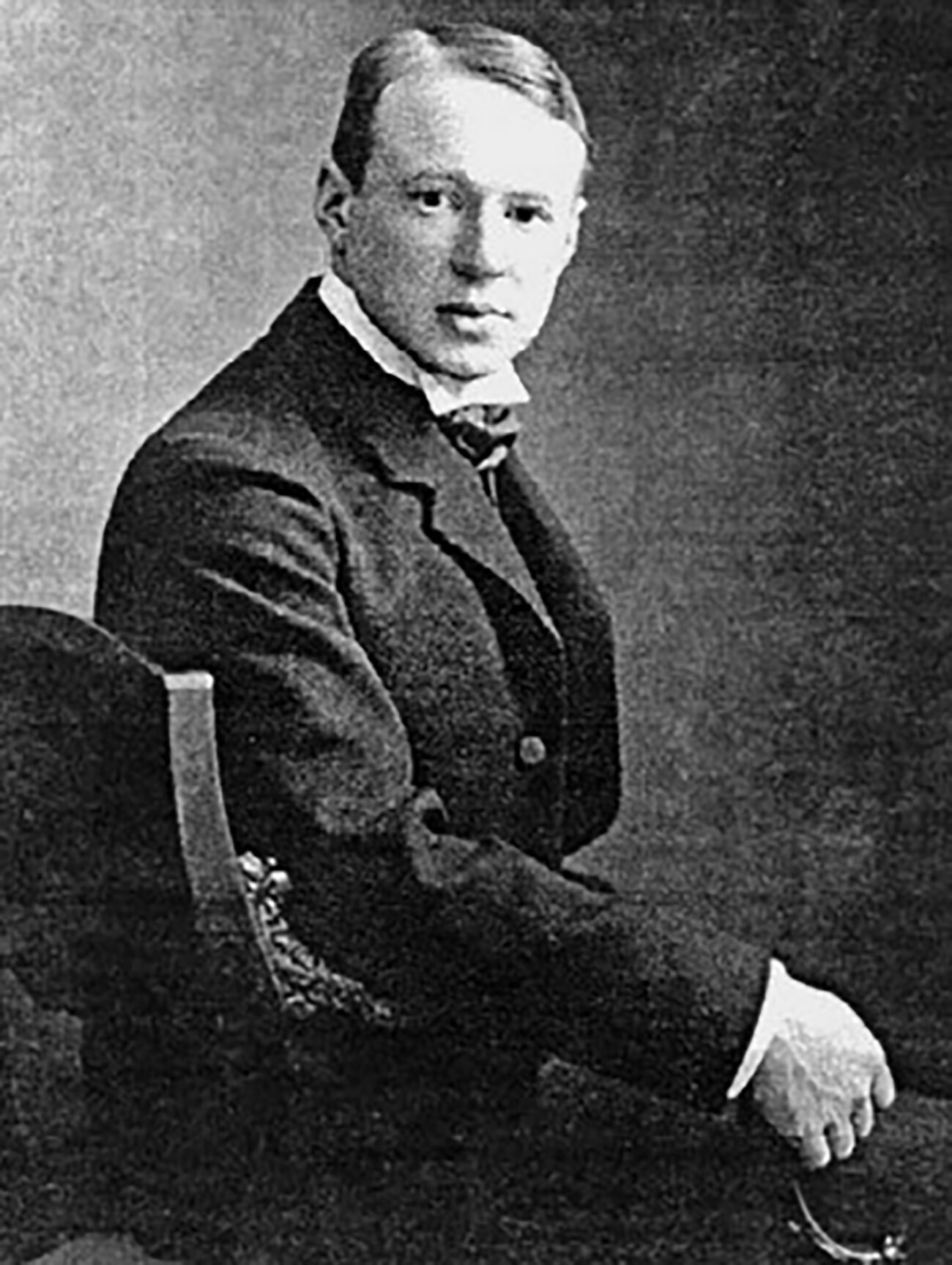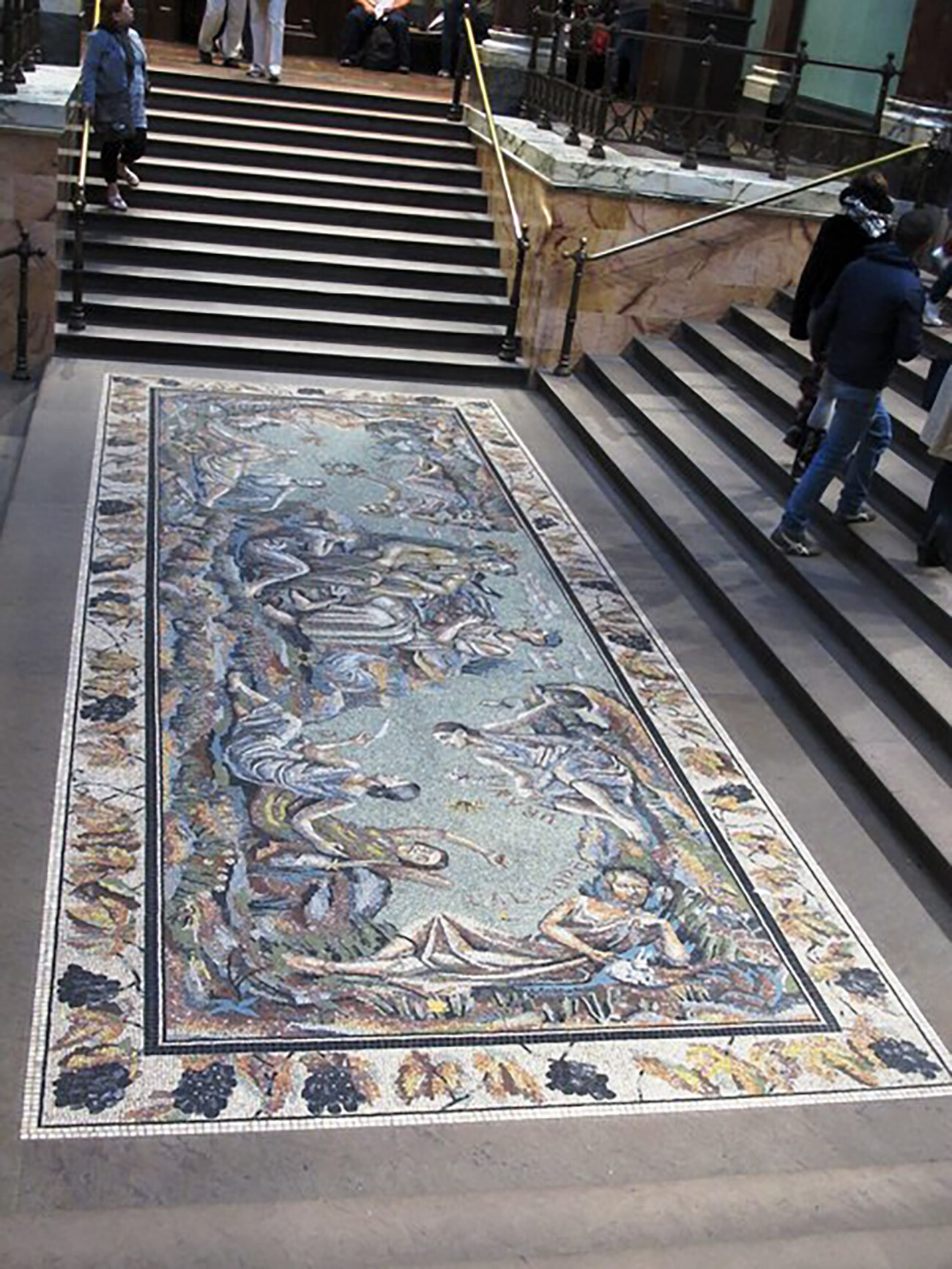
Russian artist, Boris Anrep, c. 1919 aged 36
Public domainBoris Anrep was a representative of the so-called Silver Age of Russian art in the early 20th century. He composed poems and created paintings and mosaics. He even had a love affair with Anna Akhmatova, Russia’s main female poet. And she devoted several poems to him.
After the 1917 Bolshevik Revolution, Anrep moved to England, where he spent the rest of his life until 1969. He had several solo exhibitions in London and anyone is free to see his works to this day. You simply have to step inside the National Gallery in London. Boris Anrep’s colorful mosaics with allegorical plots cover the entrance floor there.

Mosaics in the vestibule of the National Gallery, London
Mike Quinn (CC BY-SA 2.0)Winston Churchill, for example, is depicted in the scene ‘Defiance’ fighting a crowned demon.
Anrep portrayed Virginia Woolf as Clio, the muse of history.
The artist's beloved, Anna Akhmatova, can also be seen there. She is depicted in the image of “Compassion”, surrounded by the horrors of war. (Referring to her most famous poem ‘Requiem’ that she wrote after World War II, seeing herself the Leningrad Siege and Stalin’s purge).
The National Gallery is not the only place where Anrep's mosaics are on display. They can be found all over London and even in Westminster Abbey.
Dear readers,
Our website and social media accounts are under threat of being restricted or banned, due to the current circumstances. So, to keep up with our latest content, simply do the following:
If using any of Russia Beyond's content, partly or in full, always provide an active hyperlink to the original material.
Subscribe
to our newsletter!
Get the week's best stories straight to your inbox